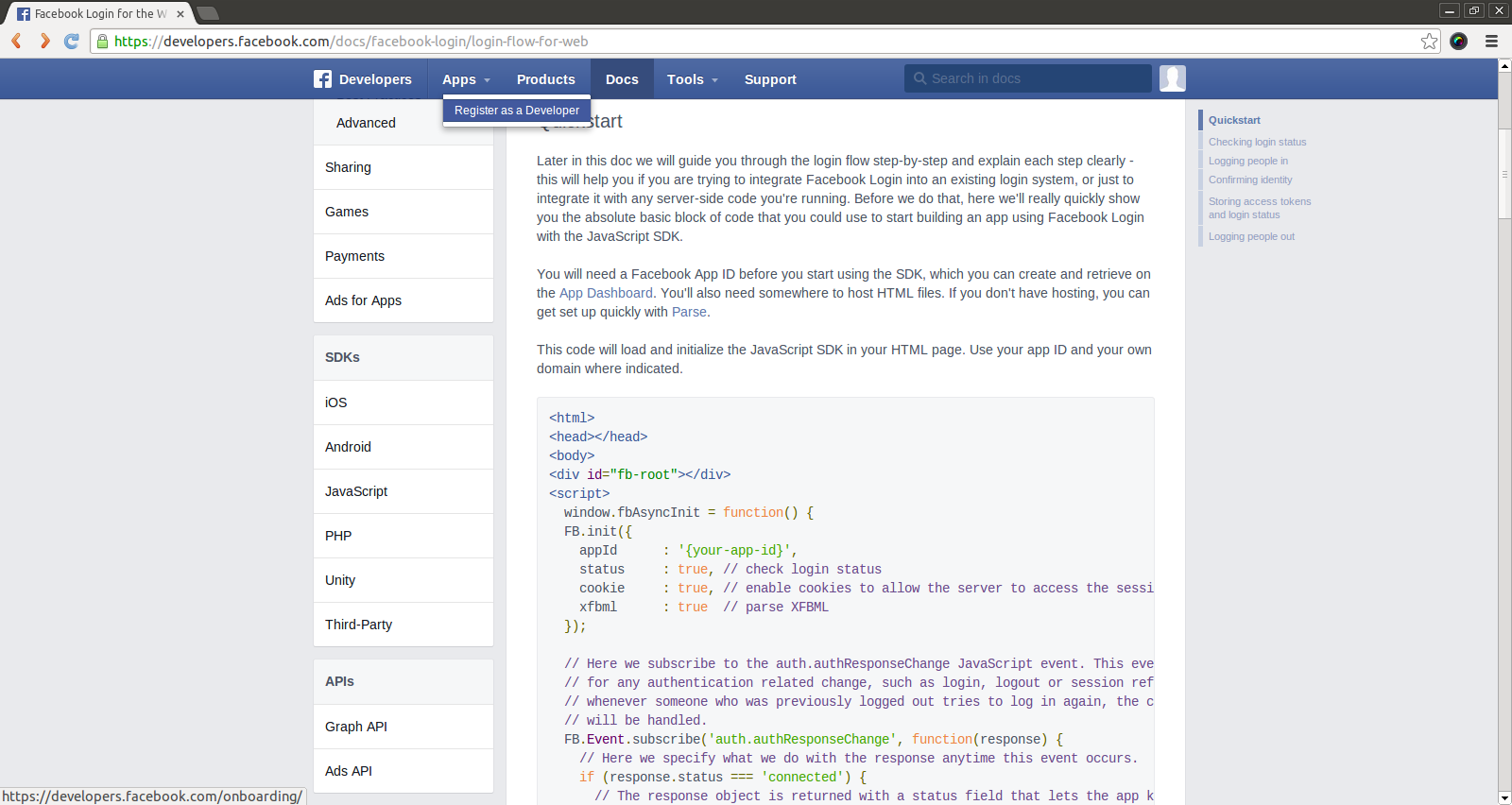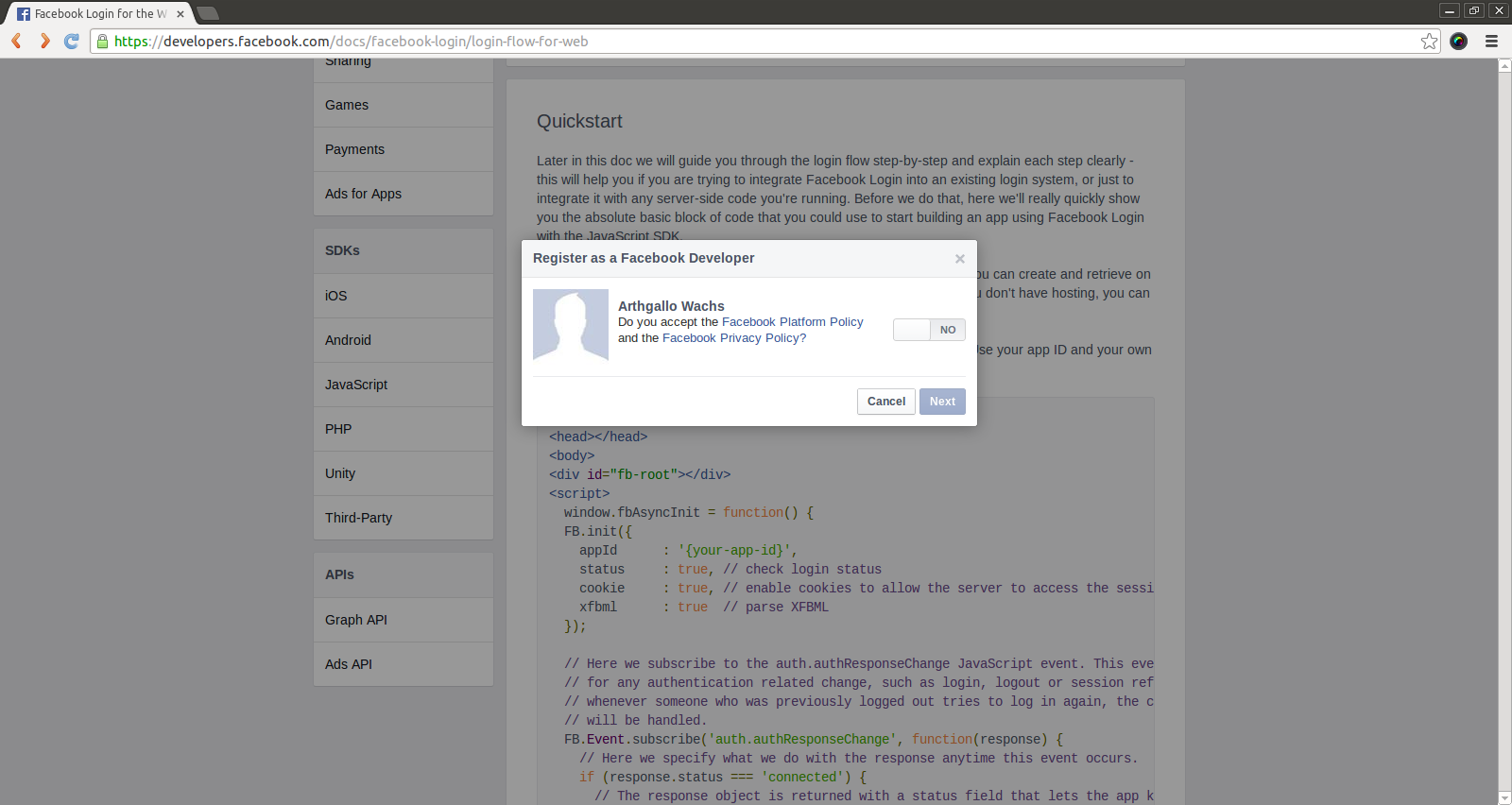I recently updated my Ubuntu from 13.04 to the next Long Term Support (LTS) version which is 14.04. Unfortunately my postgreSQL database did not allow the OS user to login, saying it was a bad password.
I recalled my earlier post from some time back, where I had addressed this issue. However even switching to postgres user did not seem to work, as the system complained that I was entering the wrong password.
I needed to reset my password for the OS level postgres user. For this, I entered the following command on my terminal.
$ sudo passwd postgres
This prompted me to enter the sudo password followed by the new password for the postgres user.
Now I followed the steps from my previous post to reinstate the passwords for my OS level user.
Search This Blog
Monday, November 3, 2014
Monday, May 26, 2014
Installing Node.js on Ubuntu
In this post, we are going to see how
to install Node.js (a server side Javscript engine) on Ubutntu.
Installing Node.js on Ubuntu is straightforward.
Open a terminal window and enter the
following command.
$ sudo
apt-get install nodejs
The system will show a prompt to
download and install the requisite binaries as follows.
After the installation is complete,
open an editor and enter the code to create a small test programme.
Our test programme will create an http server.
var http
= require('http');
http.createServer(function
(req, res) {
res.writeHead(200,
{'Content-Type': 'text/plain'});
res.end('Hello
World\n');
}).listen(1337,
'127.0.0.1');
console.log('Server
running at http://127.0.0.1:1337/');
Save the program (I saved mine as
test_http.js), and open a terminal window and navigate to the place
you have saved your test program. Now enter the following command.
$ nodejs
test_http.js
That's it. Our test http server is
running.
Now lets open a browser and enter the
URL for the server.
There you have it folks. Our first test
program with server side javascript with Node.js on Ubuntu.
Labels:
node,
nodejs,
Server side JavaScript. node.js,
Ubuntu
Sunday, April 27, 2014
Building apps on Facebook - Registering as a Developer
To build apps on Facebook, you need to
first register as a Developer. To register as a developer, access lhttp://developers.facebook.com and login to your account. You will see a top
level menu item called “Apps” with an option titled “Register
as a Developer” as shown in the screenshot below. Go ahead and
select that option.
You will be shown an option to review
the Facebook policy and accept it. Please read the policy as it
contains some important things you should know before signing up.
If you have read the policy and agree
with it, go ahead and say, yes.
Next FB will ask you to provide a
contact number for a code that may be sent as text or through an
automated calling system.
Enter the code in the box provided, and
go ahead and register. You will be shown a message that you have been
accepted.
That is it. That was simple enough.
Saturday, March 22, 2014
Binary Linear Programming using R
In the following series we will perform
Linear optimizations using R. The first thing to do is to install the
necessary packages in R. We will be using a package called lpSolveAPI
for this exercise. We will start by downloading and installing the necessary packages followed by selecting a problem for project selection, and solving it within R
Installing the necessary R packages
First start R as an administrator. In
Ubuntu, it will be sudo R.
Type command to install lpSolveAPI package as shown below.
install.packages(“lpSolveAPI”)
R will prompt us to choose an appropriate mirror. Choose the mirror closest to you.
Next install ggplot2
Next install reshape
Next install gridExtra
We can quit running R as an
administrator, and start it again as a normal user, as shown below.
Project Portfolio Selection Using R
The next thing we want to do is a pick
up a relevant problem. For purpose of illustration, we are going to
use an example of project portfolio selection example from a relevant
paper “Strategic
Selection of the Most Feasible Projects Using Linear Programming
Models” by Yara Hamdan. The purpose is to pick up projects that
are going to have the maximum benefit, and minimize costs along
multiple dimensions.
In the paper, the author has cited 20
hypothetical projects that compete with each other for cost, labour
and other similar constraints. The objective is to select as many
projects as possible within the given constraints.
The overall data for all the projects
is given in the following table, that is identical to the data given
in the paper.
Project
|
Cost
|
Labor
|
Priority
|
Quality
|
Risk
|
Historical
Info
|
New
Skills
|
Commercial
Complex
|
Tech.
Advance
|
|
1
|
A
|
100000
|
300000
|
0
|
70
|
80
|
1200
|
720
|
1400
|
230
|
2
|
B
|
2600000
|
550000
|
0
|
130
|
130
|
2300
|
830
|
1950
|
410
|
3
|
C
|
500000
|
90000
|
0
|
420
|
40
|
550
|
560
|
670
|
1230
|
4
|
D
|
3200000
|
700000
|
0
|
360
|
140
|
3500
|
1000
|
3200
|
1200
|
5
|
E
|
2700000
|
500000
|
0
|
400
|
100
|
2500
|
870
|
2300
|
1000
|
6
|
F
|
4500000
|
850000
|
0
|
200
|
175
|
3800
|
1200
|
3600
|
750
|
7
|
G
|
700000
|
120000
|
0
|
150
|
65
|
850
|
660
|
800
|
560
|
8
|
H
|
250000
|
75000
|
0
|
90
|
30
|
400
|
400
|
470
|
320
|
9
|
I
|
750000
|
200000
|
0
|
320
|
70
|
900
|
680
|
890
|
900
|
10
|
J
|
2300000
|
450000
|
0
|
120
|
120
|
2000
|
880
|
2200
|
290
|
11
|
K
|
3500000
|
560000
|
0
|
300
|
155
|
3700
|
1100
|
3400
|
1000
|
12
|
L
|
1700000
|
350000
|
0
|
90
|
100
|
1500
|
750
|
1800
|
320
|
13
|
M
|
900000
|
270000
|
1
|
360
|
70
|
1000
|
700
|
1300
|
980
|
14
|
N
|
3600000
|
750000
|
0
|
400
|
160
|
2100
|
950
|
2400
|
1500
|
15
|
O
|
1200000
|
320000
|
0
|
250
|
110
|
1300
|
730
|
1000
|
900
|
16
|
P
|
2200000
|
480000
|
0
|
220
|
125
|
2100
|
860
|
2400
|
720
|
17
|
Q
|
600000
|
100000
|
0
|
160
|
60
|
780
|
700
|
800
|
520
|
18
|
R
|
800000
|
160000
|
0
|
100
|
75
|
950
|
790
|
900
|
250
|
19
|
S
|
3000000
|
500000
|
0
|
340
|
135
|
2900
|
920
|
3200
|
900
|
20
|
T
|
542663
|
70000
|
0
|
210
|
60
|
620
|
560
|
590
|
640
|
The paper provides the formulation in LINGO language. We shall solve the same problem using R programming language.
The R script for the above is as
follows
#
Load the lpSolveAPI library
library(lpSolveAPI)
maxrow <-9
maxcolumn <-20
maxrow <-9
maxcolumn <-20
# We create a new empty model with 9 rows and 20 columns
lpmodel <-make.lp(maxrow,maxcolumn)
#
Setting the appropriate data for each project, that translates to a
column in the lpSolve equation
set.column(lpmodel,
1, c(100000,300000,0,70,80,1200,720,1400,230))
set.column(lpmodel,
2, c(2600000,550000,0,130,130,2300,830,1950,410))
set.column(lpmodel,
3, c(500000,90000,0,420,40,550,560,670,1230))
set.column(lpmodel,
4, c(3200000,700000,0,360,140,3500,1000,3200,1200))
set.column(lpmodel,
5, c(2700000,500000,0,400,100,2500,870,2300,1000))
set.column(lpmodel,
6, c(4500000,850000,0,200,175,3800,1200,3600,750))
set.column(lpmodel,
7, c(700000,120000,0,150,65,850,660,800,560))
set.column(lpmodel,
8, c(250000,75000,0,90,30,400,400,470,320))
set.column(lpmodel,
9, c(750000,200000,0,320,70,900,680,890,900))
set.column(lpmodel,
10, c(2300000,450000,0,120,120,2000,880,2200,290))
set.column(lpmodel,
11, c(3500000,560000,0,300,155,3700,1100,3400,1000))
set.column(lpmodel,
12, c(1700000,350000,0,90,100,1500,750,1800,320))
set.column(lpmodel,
13, c(900000,270000,1,360,70,1000,700,1300,980))
set.column(lpmodel,
14, c(3600000,750000,0,400,160,2100,950,2400,1500))
set.column(lpmodel,
15, c(1200000,320000,0,250,110,1300,730,1000,900))
set.column(lpmodel,
16, c(2200000,480000,0,220,125,2100,860,2400,720))
set.column(lpmodel,
17, c(600000,100000,0,160,60,780,700,800,520))
set.column(lpmodel,
18, c(800000,160000,0,100,75,950,790,900,250))
set.column(lpmodel,
19, c(3000000,500000,0,340,135,2900,920,3200,900))
set.column(lpmodel,
20, c(542663,70000,0,210,60,620,560,590,640))
#
Declaring the rhs values
cost <-10000000
hours <-2000000
priority <- 1
quality <-1000
risk <-600
histinfo <-10000
newexp <-5000
comm <-10000
tech <-3000
hours <-2000000
priority <- 1
quality <-1000
risk <-600
histinfo <-10000
newexp <-5000
comm <-10000
tech <-3000
#
To start, each project has uniform weightage
set.objfn(lpmodel,rep(1,maxcolumn))
#
Each constraint provides the upper bound of rhs
set.constr.type(lpmodel,rep("<=",
maxrow))
#
Set the RHS values
set.rhs(lpmodel,
c(cost,hours,priority,quality,risk,histinfo,newexp,comm,tech))
#
Setting all variable types to be binary
set.type(lpmodel,1,"binary")
set.type(lpmodel,2,"binary")
set.type(lpmodel,3,"binary")
set.type(lpmodel,4,"binary")
set.type(lpmodel,5,"binary")
set.type(lpmodel,6,"binary")
set.type(lpmodel,7,"binary")
set.type(lpmodel,8,"binary")
set.type(lpmodel,9,"binary")
set.type(lpmodel,10,"binary")
set.type(lpmodel,11,"binary")
set.type(lpmodel,12,"binary")
set.type(lpmodel,13,"binary")
set.type(lpmodel,14,"binary")
set.type(lpmodel,15,"binary")
set.type(lpmodel,16,"binary")
set.type(lpmodel,17,"binary")
set.type(lpmodel,18,"binary")
set.type(lpmodel,19,"binary")
set.type(lpmodel,20,"binary")
#Setting the objective function direction
lp.control(lpmodel,sense='max')
#Finally lets name the model variables
Rownames <- c("Cost","Labor","Priority","Quality","Risk","Historical Info","New Skills","Commercial Complex","Tech. Advance")
Colnames <- c("Project A","Project B","Project C","Project D","Project E","Project F","Project G","Project H","Project I","Project J","Project K","Project L","Project M","Project N","Project O","Project P","Project Q","Project R","Project S","Project T")
dimnames(lpmodel) <- list(Rownames, Colnames)
Colnames <- c("Project A","Project B","Project C","Project D","Project E","Project F","Project G","Project H","Project I","Project J","Project K","Project L","Project M","Project N","Project O","Project P","Project Q","Project R","Project S","Project T")
dimnames(lpmodel) <- list(Rownames, Colnames)
#
Solving the model
solve(lpmodel)
get.objective(lpmodel)
get.variables(lpmodel)
get.constraints(lpmodel)
Solving the model, we can see that the
same 7 projects got selected using R lpSolveAPI
> solve(lpmodel)
[1] 0
> get.objective(lpmodel)
[1] 7
> get.variables(lpmodel)
[1] 1 1 0 0 0 0 1 1 0 0 0 1 0 0 0 0 1 1 0 0
> get.constraints(lpmodel)
[1] 6750000 1655000 0 790 540 7980 4850 8120 2610
Here is the screenshot
That's it folks.... We solved a Binary LP problem using R.
Subscribe to:
Comments (Atom)





+-+gedit_085.png)















